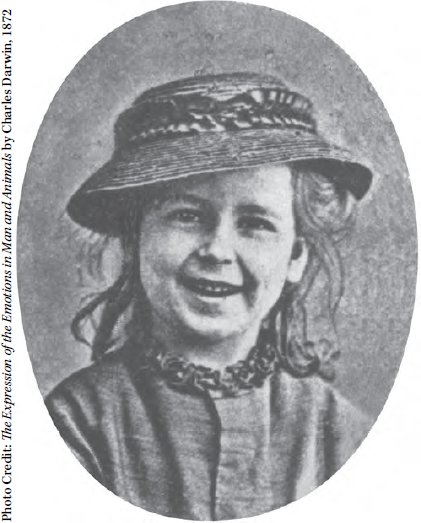1
Approaches to Understanding Emotions
CONTENTS
What Is an Emotion? First Ideas
Charles Darwin: The Evolutionary Approach
William James: The Physiological Approach
Sigmund Freud: The Psychotherapeutic Approach
Philosophical and Literary Approaches
Aristotle and the Ethics of Emotions
René Descartes: Philosophically Speaking
George Eliot: The World of the Arts
Brain Science, Psychology, Sociology
John Harlow, Tania Singer: New Brain Science
Magda Arnold, Sylvan Tomkins: New Psychological Theories
Alice Isen: New Experimentation
Erving Goffman, Arlie Russell Hochschild: Selves and Others
What Is an Emotion? Some Conceptions
Researchers’ Conceptions of Emotions
The Emotional Realm: Emotions, Moods, Dispositions

FIGURE 1.0 Young girl in hat, from Darwin (1872).
Why is every critical moment in the fate of the adult or child so clearly colored by emotion?
(Vygotsky, 1987, p. 335)
Introduction
Imagine you could flip a switch that would shut off your emotions. No more tongue-tied embarrassment around a romantic interest. No more saying something in anger that you will regret. No more anxiety that interferes with your ability to do as well as you can. Would you flip this switch?
If so, you are in good company. For over two thousand ...
Get Understanding Emotions, 3rd Edition now with the O’Reilly learning platform.
O’Reilly members experience books, live events, courses curated by job role, and more from O’Reilly and nearly 200 top publishers.

